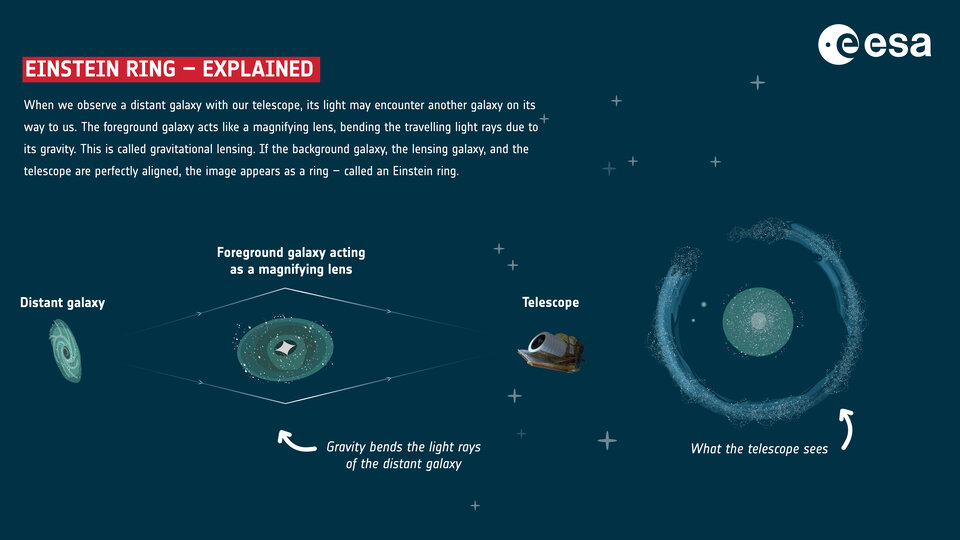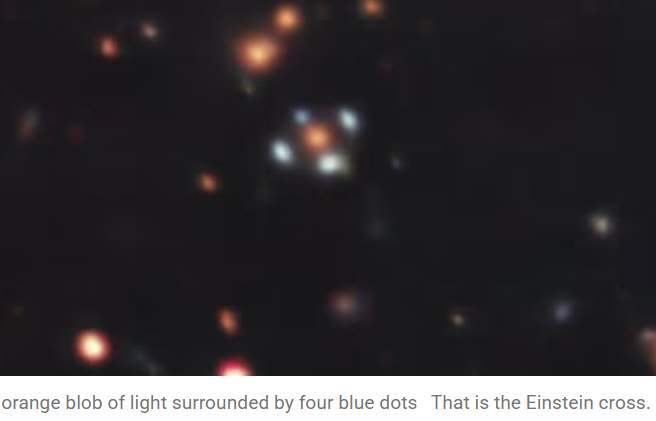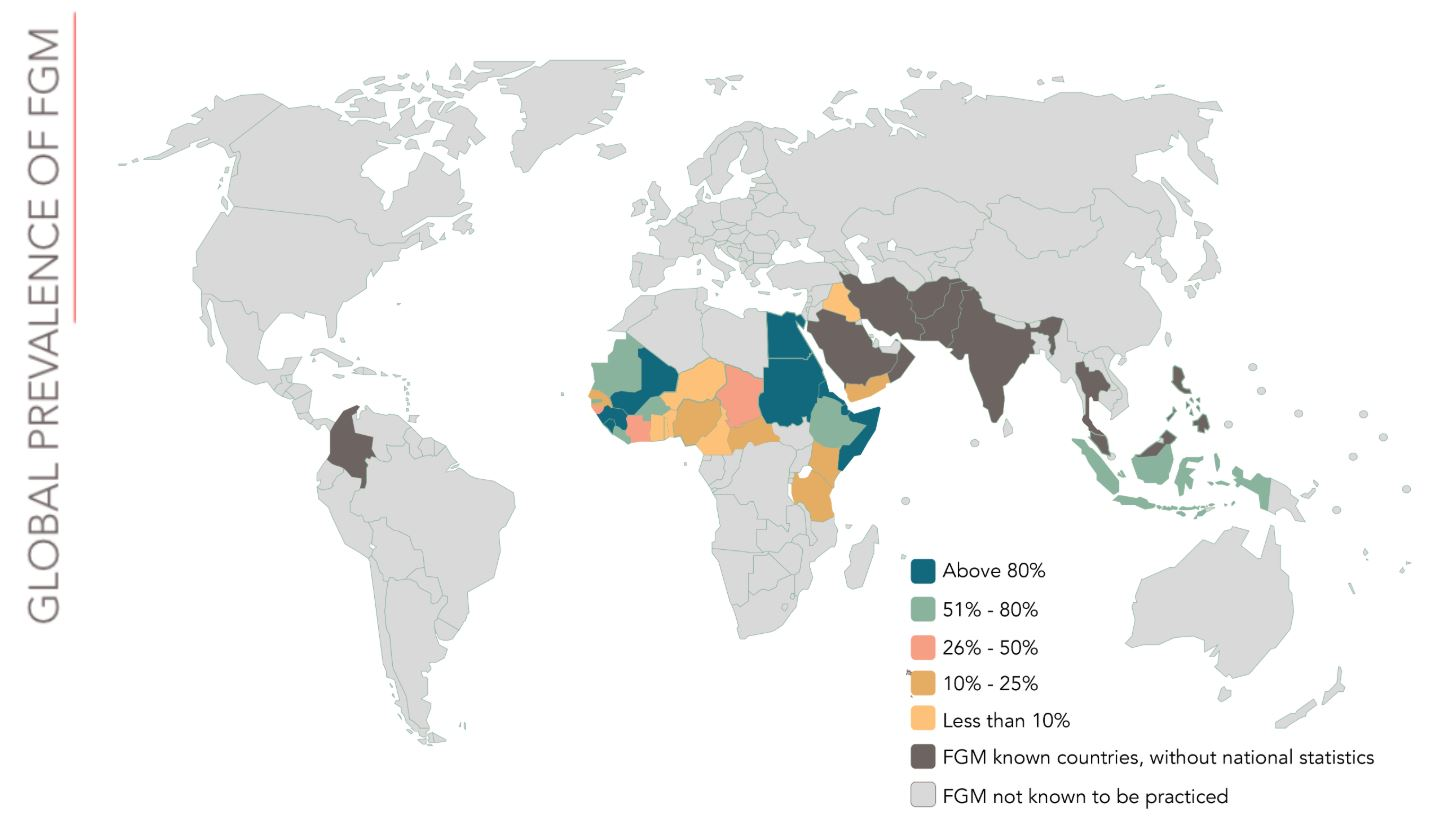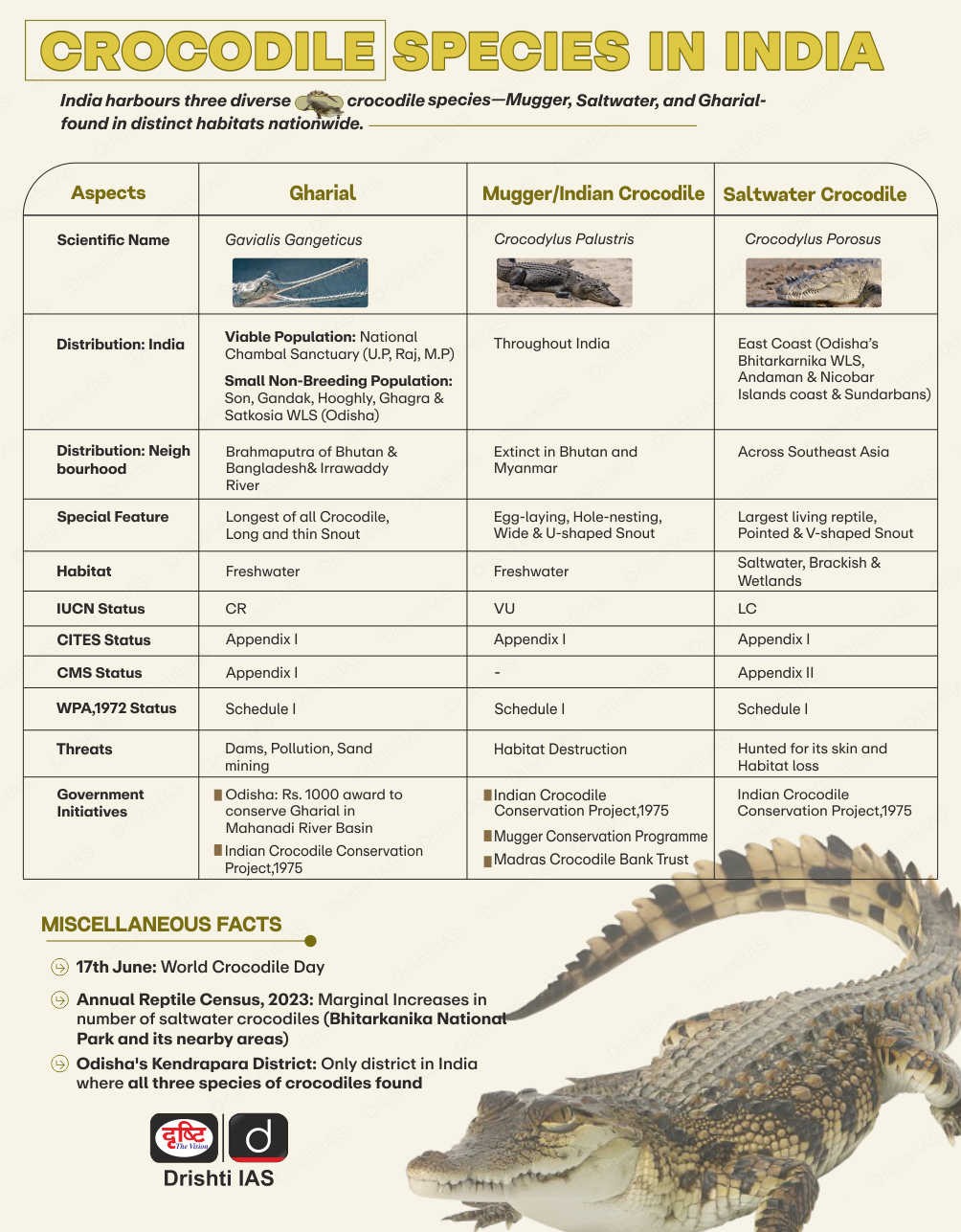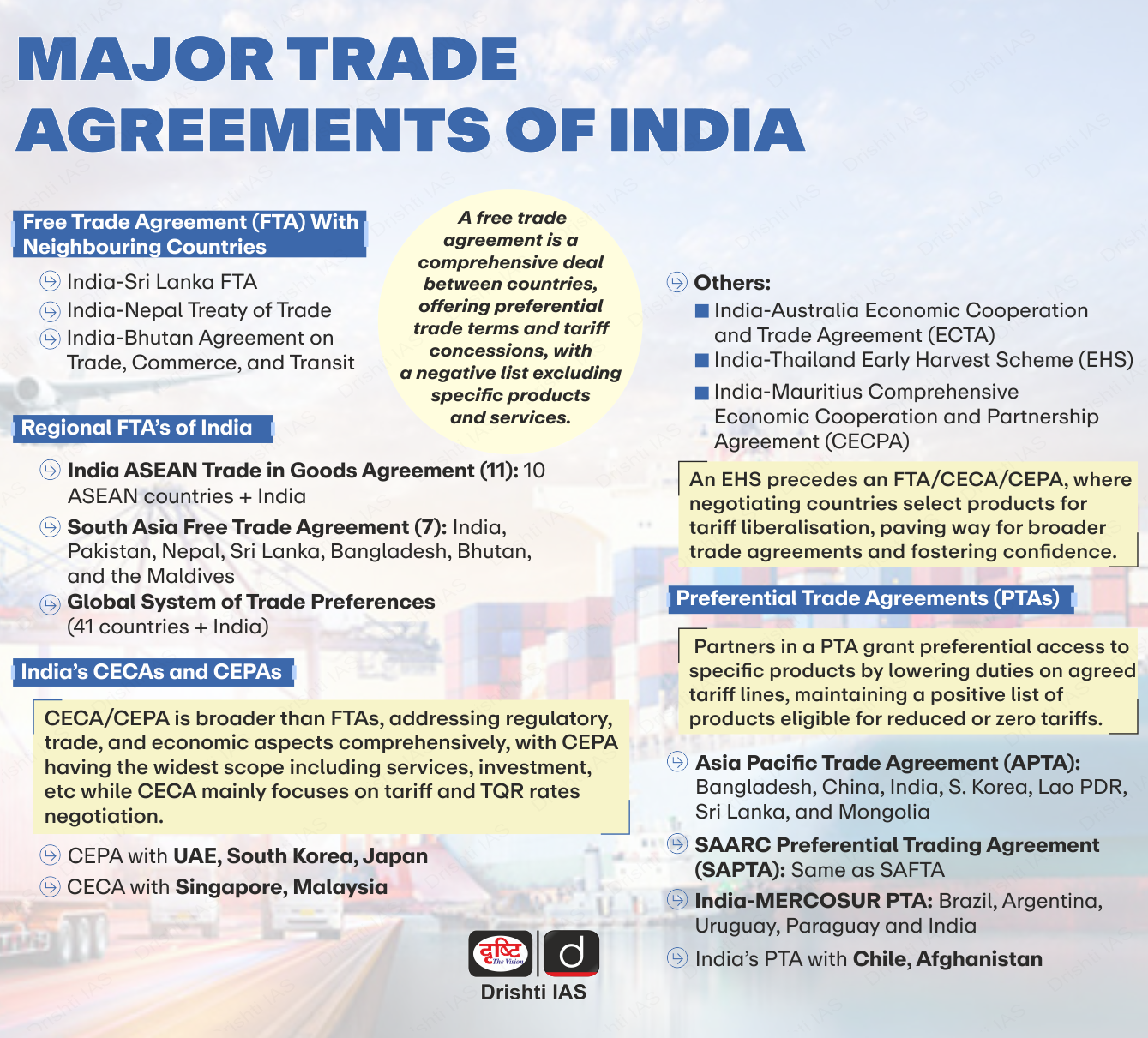Indian Polity
Shankari Prasad Case and the First Amendment Act
For Prelims: First Amendment Act, 1951, Right to Property, Ninth Schedule, Zamindari System
For Mains: Land Reforms in India, Fundamental Rights vs. Constitutional Amendments
Why in News?
The Shankari Prasad Singh Deo v. Union of India, 1951 case was a key moment in Indian constitutional law, challenging the First Amendment Act, 1951, which curtailed the Right to Property.
What was the First Amendment Act, 1951?
- Key Provisions:
- Ninth Schedule: The Ninth Schedule of the Indian Constitution, was introduced by the First Amendment Act, 1951, lists laws that cannot be challenged in courts, protecting them from judicial review, especially land reform laws. Initially, 13 laws were added to the schedule.
- Protection of Land Reforms: Articles 31A and 31B were inserted into the Constitution, which shielded land reform laws from judicial review, particularly laws aimed at the acquisition of estates.
- Article 31A: Stated that any law related to land reforms could not be struck down for violating fundamental rights, particularly right to property (Article 31).
- Article 31B: Ensures that the laws specified in the Ninth Schedule, even if they conflict with fundamental rights, will remain valid and enforceable.
- Other Changes: Restricted free speech under Article 19. Strengthened caste-based reservations by allowing laws for social and educational upliftment.
- Need for Amendment: This was crucial in the context of India's post-independence land reform efforts aimed at reducing the power of large landowners (zamindars) and redistributing land to the peasants.
What was Shankari Prasad Singh Deo v. Union of India Case, 1951?
- Case Background: The case arose when Sankari Prasad Singh Deo, a zamindar (landowner) from West Bengal, challenged the First Amendment Act, 1951, which had curtailed the Right to Property.
- The first amendment sought to give the government power to acquire land from zamindars without compensation, which was contrary to the fundamental rights (Article 19(1)(f) and Article 31) granted in the original Constitution.
- Supreme Court Judgment: A five-judge Bench of the Supreme Court ruled in favor of the government, upholding the First Amendment.
- The Court distinguished between Ordinary law (which cannot violate fundamental rights) and Constitutional amendments (which can alter fundamental rights).
- Article 13(2) states that no “law” can take away fundamental rights. The Court ruled that constitutional amendments are not ordinary “laws”, so they are exempt from this restriction.
- Significance: The SC decision removed legal barriers to land reforms, allowing states to proceed with zamindari abolition.
- Implications:
- Continued Legal Challenges: In Sajjan Singh v. State of Rajasthan, 1964, the Court upheld judgement of Sankari Prasad Case but two judges questioned whether fundamental rights should be amendable.
- In I.C. Golaknath v. State of Punjab, 1967 the Supreme Court reversed its stance, ruling that Parliament cannot amend fundamental rights.
- In Keshavananda Bharati v. State of Kerala, 1973 a larger Bench overruled Sankari Prasad and introduced the Basic Structure Doctrine.
- The ruling held that while Parliament can amend the Constitution, it cannot alter its "basic structure", including fundamental rights.
- However, the right to property was not considered part of the basic structure, allowing land reforms to continue.
- Right to Property as Legal Right: The 44th Amendment Act of 1978 removed the Right to Property from the list of Fundamental Rights by repealing Article 19(1)(f) and Article 31.
- Right to Property was then made a legal right under Article 300A (no one can be deprived of their property without the authority of law) of the Constitution.
- Continued Legal Challenges: In Sajjan Singh v. State of Rajasthan, 1964, the Court upheld judgement of Sankari Prasad Case but two judges questioned whether fundamental rights should be amendable.
What was the Zamindari System?
- About: The Zamindari System, institutionalized under British rule by Lord Cornwallis in 1793 through the Permanent Settlement, gave zamindars control over land and allowed them to collect rent from peasants.
- By statutory backing, the British made Zamindari an exploitative institution through provisions like rack-renting (excessive rent), causing economic inequality.
- Land revenue was split, with the government getting 10/11th and zamindars the rest, leaving farmers in poverty.
- By statutory backing, the British made Zamindari an exploitative institution through provisions like rack-renting (excessive rent), causing economic inequality.
- Reasons for Abolishing: The system led to land concentration in a few hands, leaving millions of peasants landless. The abolition aimed to redistribute land to cultivators and reduce feudal exploitation.
- Article 39(b) and (c) of the Constitution emphasized equitable distribution of resources. The abolition was in line with India’s goal of creating a socialist-leaning economy.
- Breaking large estates into smaller landholdings was expected to improve productivity.
- Partial Success: Except in a few states like West Bengal and Kerala, Zamindari abolition failed to break the feudal land monopoly due to loopholes allowing benami transactions.
|
Drishti Mains Question: Q. How did the evolution of land reforms and the change in the legal status of the Right to Property reflect the shift towards a socialist economy in India? |
UPSC Civil Services Examination, Previous Year Questions (PYQs)
Prelims
Q. What is the position of the Right to Property in India? (2021)
(a) Legal right available to citizens only
(b) Legal right available to any person
(c) Fundamental Right available to citizens only
(d) Neither Fundamental Right nor legal right
Ans: (b)
Q. ‘Economic Justice’ as one of the objectives of the Indian Constitution has been provided in (2013)
(a) the Preamble and the Fundamental Rights
(b) the Preamble and the Directive Principles of State Policy
(c) the Fundamental Rights and the Directive Principles of State Policy
(d) None of the above
Ans: (b)
Mains
Q. What was held in the Coelho case? In this context, can you say that judicial review is of key importance amongst the basic features of the Constitution? (2016)
Q. Discuss the role of land reforms in agriculture development. Identify the factors that were responsible for the success of land reforms in India. (2016)
Q. The Right to Fair Compensation and Transparency in Land Acquisition, Rehabilitation and Resettlement Act, 2013 has come into effect from I st January, 2014. What are the key issues which would get addressed with the Act in place? What implications would it have on industrialization and agriculture in India? (2014)

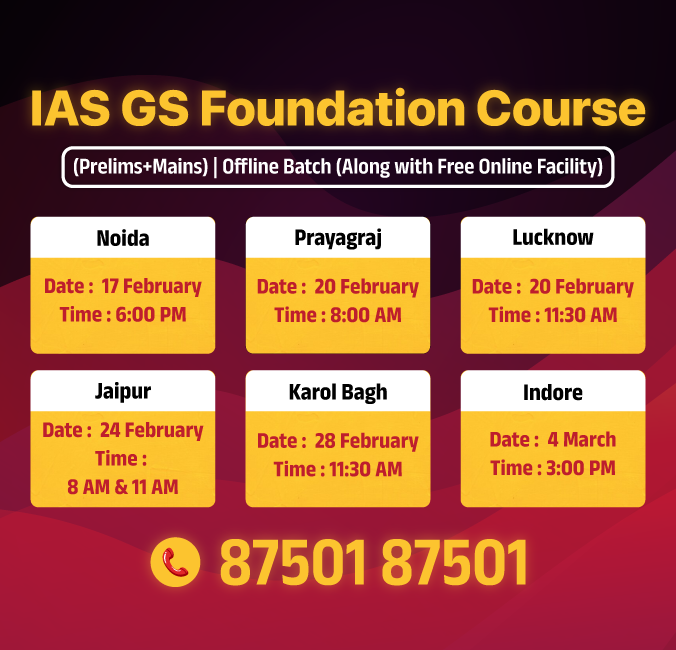
Social Issues
Rising Online Child Abuse
For Prelims: Artificial Intelligence, National Cyber Security Policy, Cyber Surakshit Bharat Initiative
For Mains: Impact of cyberbullying and online sexual exploitation on children, Issues Related to Children
Why in News?
A study published in The Lancet, based on a comprehensive analysis of 123 studies from various regions, has highlighted the growing concern of online sexual abuse faced by children worldwide.
What are the Key Findings of the Study on Online Child Abuse?
- Prevalence of Abuse: It highlights that one in 12 children globally (approximately 8.3%) has experienced online sexual abuse in the last decade.
- Types of Exploitation: The study identified several subtypes of online sexual abuse, including online solicitation involving sexual inquiries/conversations (12.5%), non-consensual image sharing (12.6%), online sexual exploitation (4.7%), and sexual extortion (3.5%).
- Gender Dynamics: There is no significant difference in online abuse rates between boys and girls, challenging earlier beliefs that girls are more vulnerable.
- This suggests changing online environments and behaviors, with increasing risks for boys.
- Mental Health Implications: The report links online sexual exploitation to severe mental and physical health consequences for victims, including lower life expectancy and reduced employment prospects.
What are the Reasons for Rising Online Child Abuse?
- Increased Internet Access: Widespread internet access has significantly increased children's online presence (1/3 of internet users) rendering them vulnerable to exploitation, especially in unsupervised social media and gaming.
- Pandemic-Related Factors: Increased online activity during Covid-19 pandemic enabled offenders to exploit children, leading to a surge in abuse cases, including a threefold rise in sextortion since March 2020.
- Advancements in Technology: The large number of artificial intelligence (AI) tools and digital platforms has made it easier for offenders to create and distribute child sexual abuse material (CSAM) that is difficult to detect and trace.
- Lack of Digital Literacy: Limited awareness of online safety makes users vulnerable; only 38% of Indian households are digitally literate.
- Inadequate Monitoring and Enforcement: Law enforcement and technology companies face challenges in keeping up with rapidly evolving online platforms, leaving gaps in monitoring and enforcement.
India’s Initiatives Related to Online Child Abuse
- Legislative and Policy Measures:
- Protection of Children from Sexual Offences (POCSO) Act, 2012 provides a legal framework to combat child sexual abuse, including online exploitation.
- Information Technology (IT) Act, 2000 contains provisions related to cybercrimes against children.
- Juvenile Justice (Care and Protection of Children) Act, 2015 addresses child protection issues, including online abuse.
- Institutional Mechanisms:
- National Cyber Crime Reporting Portal: Enables reporting of online child abuse cases.
- Indian Cyber Crime Coordination Centre (I4C) strengthens law enforcement efforts against cybercrimes, including child exploitation.
What Measures Can Be Taken to Prevent Online Child Abuse?
- Strong Legislation and Enforcement:
- Stronger Legislation: Implement stricter legal frameworks with enhanced penalties for offenders.
- International Cooperation: Strengthen collaboration with agencies like INTERPOL and FBI to dismantle cross-border abuse networks.
- Robust Reporting Systems: Improve real-time reporting and monitoring tools for social-media platforms, establish confidential helplines, and encourage social networks to report emerging ways to share abuse material.
- Public Awareness and Education: Promote digital literacy and online safety through awareness campaigns for children, parents, and educators.
- Enhance online safety through dedicated kids’ sections, features like “safe search” on social media and browsing platforms, Artificial Intelligence (AI)-based content filtering, and parental controls.
- Collaboration with Tech Industry: Encourage tech companies to adopt stricter content moderation, better age-verification, and develop ethical AI tools to prevent CSAM creation on dark web platforms.
- Need for Further Research: Invest in extensive research and data collection, especially in underrepresented regions around the world, to develop evidence-based policies and strengthen child protection frameworks.
|
Drishti Mains Question: Discuss the state of cybercrime in India and its impact on children. Suggest measures to mitigate these threats. |
UPSC Civil Services Examination, Previous Year Question (PYQ)
Prelims
Q.1 In India, under cyber insurance for individuals, which of the following benefits are generally covered, in addition to payment for the loss of funds and other benefits? (2020)
- Cost of restoration of the computer system in case of malware disrupting access to one’s computer
- Cost of a new computer if some miscreant wilfully damages it, if proved so
- Cost of hiring a specialised consultant to minimise the loss in case of cyber extortion
- Cost of defence in the Court of Law if any third party files a suit
Select the correct answer using the code given below:
(a) 1, 2 and 4 only
(b) 1, 3 and 4 only
(c) 2 and 3 only
(d) 1, 2, 3 and 4
Ans: (b)
Q.2 In India, it is legally mandatory for which of the following to report on cyber security incidents? (2017)
- Service providers
- Data centres
- Body corporate
Select the correct answer using the code given below:
(a) 1 only
(b) 1 and 2 only
(c) 3 only
(d) 1, 2 and 3
Ans: (d)
Mains
Q. What are the different elements of cyber security ? Keeping in view the challenges in cyber security, examine the extent to which India has successfully developed a comprehensive National Cyber Security Strategy. (2022)


Important Facts For Prelims
Einstein Ring
Why in News?
The European Space Agency’s (ESA) Euclid space telescope discovered a rare Einstein ring around the galaxy NGC 6505, nearly 590 million light-years away from Earth.
Note: A light-year is the distance light travels in one year, which is 9.46 trillion kilometres.
What is an Einstein Ring?
- About: An Einstein ring is a ring of light that appears around a celestial object, such as a dark matter, galaxy or cluster of galaxies.
- A full Einstein ring appears only if the observer (Euclid telescope), lensing object, and background galaxy are nearly perfectly aligned.
- Gravitational Lensing: It is a phenomenon caused by gravitational lensing, where a massive celestial body (like a galaxy) creates a gravitational field that bends and amplifies the light from a more distant object behind it forming a complete ring around the foreground object, known as an Einstein ring.
- The object causing the light bending is called a gravitational lens.
- Discovery: First discovered in 1987, Einstein rings are extremely rare, found in less than 1% of galaxies.
- The Einstein ring around NGC 6505 is formed by light from an unnamed galaxy 4.42 billion light-years away, distorted by the gravitational pull of NGC 6505, creating the striking ring-like appearance observed around it.
- Nomenclature: Albert Einstein’s General Theory of Relativity predicted that light could bend and brighten (warp space-time and curve the path of light) around massive objects due to their gravitational pull, hence the name "Einstein ring."
- Observation: Not visible to the naked eye, can only be observed through powerful space telescopes like Euclid.
- Scientific Importance: They provide a unique way to study the Universe because they act as a natural magnifying glass, revealing details of distant galaxies that would otherwise be invisible.
- Einstein Rings are valuable tools in astrophysics because they help scientists investigate dark matter and study dark energy (responsible for the accelerating expansion of the Universe).
Phenomena Similar to Einstein rings
- Einstein Cross: An Einstein Cross is a rare gravitational lensing phenomenon where light from a distant galaxy is bent by a massive foreground galaxy, creating four distinct images around it in a cross-like pattern.
UPSC Civil Services Examination Previous Year Question (PYQ)
Prelims
Q. In the context of modern scientific research, consider the following statements about ‘IceCube’, a particle detector located at South Pole, which was recently in the news: (2015)
- It is the world’s largest neutrino detector, encompassing a cubic kilometre of ice.
- It is a powerful telescope to search for dark matter.
- It is buried deep in the ice.
Which of the statements given above is/are correct?
(a) 1 only
(b) 2 and 3 only
(c) 1 and 3 only
(d) 1, 2 and 3
Ans: (d)

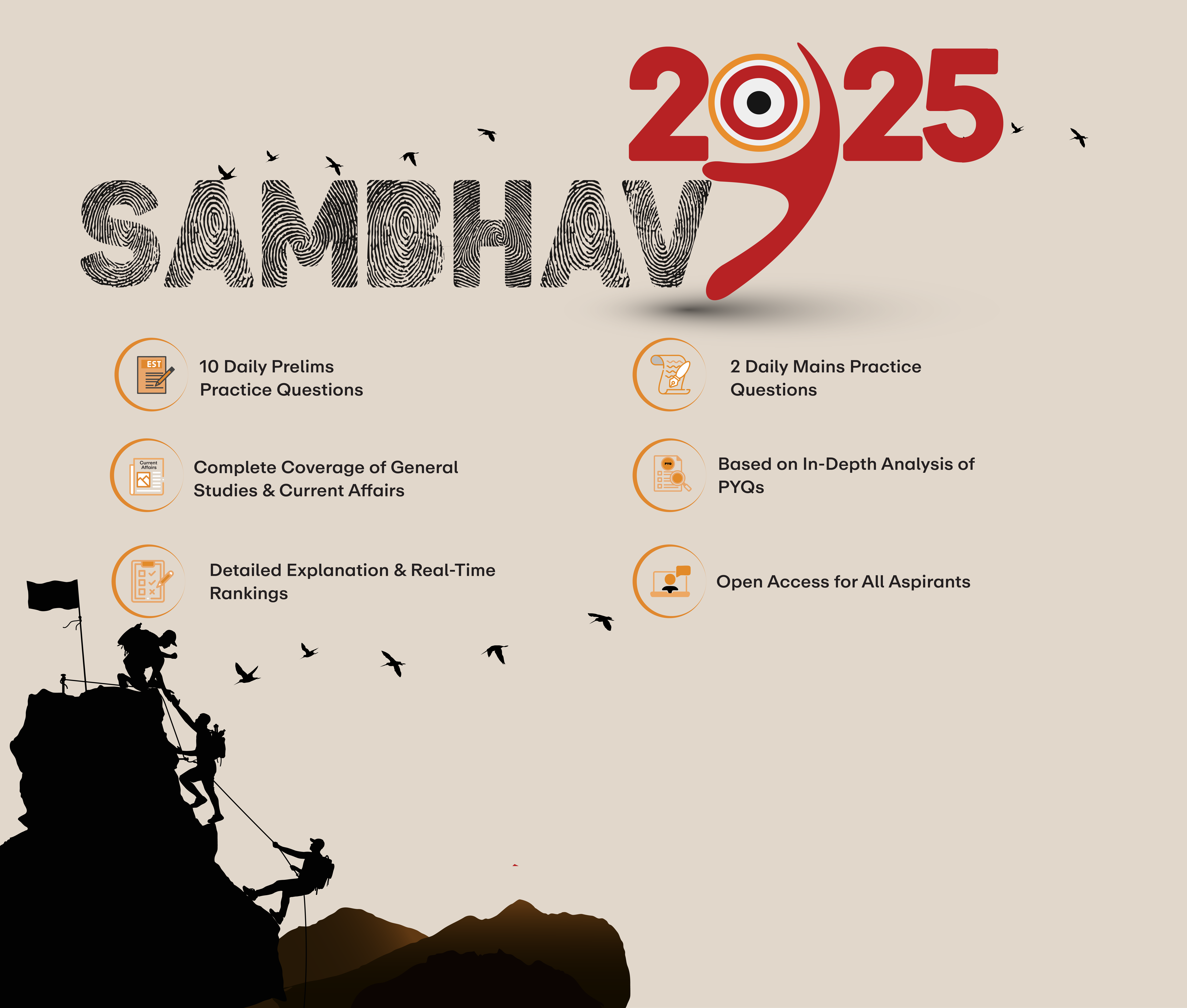
Important Facts For Prelims
Limits to the Right to Access Justice
Why in News?
The Supreme Court (SC) of India fined a petitioner for frivolous litigation and forum shopping, citing misuse of judicial time and resources.
- The case highlights legal misuse, with the petitioner repeatedly filing meritless pleas to overturn a service dismissal.
What is the Supreme Court Ruling on Right to Access Justice?
- Case Background: The petitioner challenged his dismissal for misconduct across multiple legal forums, including the Industrial Tribunal, High Court, and Supreme Court, despite repeated rejections.
- Ultimately, the Supreme Court dismissed his petitions and fined him for forum shopping.
- SC Ruling: The Supreme Court affirmed that while the right to access justice is a fundamental right (Article 21), it is not absolute.
- The SC stated that frivolous petitions waste judicial time, delay justice, and undermine the integrity of the legal system.
- Judicial Rulings on Right to Access Justice:
- In Anita Khushwa v. Pushpa Sadan, 2016, the SC reaffirmed that access to justice is a fundamental right under Articles 21 and 14 and it identified 4 key components for access to justice:
- Effective adjudicatory mechanisms.
- Reasonable accessibility in terms of distance.
- Speedy adjudication.
- Affordable access to the judicial process.
- In Buddhi Kota Subbarao v. K. Parasaran , 1996 case, the SC dismissed petitions of a retired Navy captain prosecuted for espionage.
- The SC rejected his fraud claims for lack of evidence, upholding judicial finality and ruling that higher court decisions cannot be endlessly challenged without new proof.
- In Anita Khushwa v. Pushpa Sadan, 2016, the SC reaffirmed that access to justice is a fundamental right under Articles 21 and 14 and it identified 4 key components for access to justice:
| Read More: SC Prioritising SLPs Disposal |
What are the Provisions Related to Right to Access to Justice?
- Constitutional Provisions:
- Article 14 (Right to Equality): Article 14 guarantees equality before the law and equal protection of the laws.
- The SC has interpreted this to include the right to access justice, ensuring that all individuals have an equal opportunity to seek legal redress without discrimination.
- Article 21 (Right to Life and Personal Liberty): Article 21 ensures that individuals can seek judicial remedies for grievances, thus protecting their personal liberty and rights.
- Article 39A (Free Legal Aid): Article 39A provides free legal aid to ensure that no citizen is denied justice due to economic or other disabilities.
- It aims to promote justice on the basis of equal opportunity and is particularly focused on marginalized sections of society.
- Articles 32 and 226: Articles 32 and 226 allows aggrieved parties to enforce their right to access to justice by approaching the Supreme Court or the High Court.
- Article 14 (Right to Equality): Article 14 guarantees equality before the law and equal protection of the laws.
- Legal Framework:
- The Legal Services Authorities Act, 1987, established NALSA to provide free legal aid to weaker sections of society.
- Under Section 12 of the Act, eligible groups include women, children, SCs/STs, disabled individuals, and low-income persons, ensuring legal representation for vulnerable populations.
- Lok Adalats offer speedy, accessible dispute resolution under the Act.
- Tele-Law provides legal advice to marginalized communities, while E-Lok Adalats ensure access for those unable to attend physical hearings.
- The Legal Services Authorities Act, 1987, established NALSA to provide free legal aid to weaker sections of society.
- Public Interest Litigation (PIL):
- PIL expanded the rule of locus standi, allowing public-spirited individuals or organizations to file cases for enforcing rights, not just the directly affected individuals.
- Ex: MC Mehta v. Union of India (1987) was the first PIL filed on environmental pollution in Delhi.
UPSC Civil Services Examination, Previous Year Question (PYQ)
Prelims
Q. Consider the following statements: (2019)
- The 44th Amendment to the Constitution of India introduced an Article placing the election of the Prime Minister beyond judicial review.
- The Supreme Court of India struck down the 99th Amendment to the Constitution of India as being violative of the independence of judiciary.
Which of the statements given above is/are correct?
(a) 1 only
(b) 2 only
(c) Both 1 and 2
(d) Neither 1 nor 2
Ans: (b)
Q. With reference to National Legal Services Authority, consider the following statements: (2013)
- Its objective is to provide free and competent legal services to the weaker sections of the society on the basis of equal opportunity.
- It issues guidelines for the State Legal Services Authorities to implement the legal programmes and schemes throughout the country.
Which of the statements given above is/are correct?
(a) 1 only
(b) 2 only
(c) Both 1 and 2
(d) Neither 1 nor 2
Ans: (c)
Mains
Q. Critically examine the Supreme Court’s judgment on ‘National Judicial Appointments Commission Act, 2014’ with reference to the appointment of judges of higher judiciary in India. (2017)
Q. Who are entitled to receive free legal aid? Assess the role of the National Legal Services Authority(NALSA) in rendering free legal aid in India (2023)


Facts for UPSC Mains
International Day of Zero Tolerance for Female Genital Mutilation
Why in News?
The world observed the International Day of Zero Tolerance for Female Genital Mutilation (FGM) (6th February) under the theme "Step up the Pace", emphasizing the need for stronger alliances and expanding movements to end FGM.
Note: The International Day of Zero Tolerance for FGM was established by the United Nations General Assembly in 2012 to raise awareness and mobilize global efforts to eliminate FGM.
What is Female Genital Mutilation?
- Definition: FGM involves altering or injuring the female genitalia for non-medical reasons. It is internationally recognized as a violation of human rights (violates non-discrimination on the basis of sex), health, and integrity of girls and women.
- Health Impacts:
- Immediate: Severe pain, excessive bleeding, infections, shock, and even death.
- Long-term: Chronic pain, infections, menstrual and sexual health issues,
- Global Prevalence: Over 230 million girls and women worldwide have undergone FGM, mostly in 30 countries across Africa, the Middle East, and Asia.
- FGM is usually performed on young girls between infancy and age 15. An estimated 4 million girls are at risk of undergoing FGM every year, averaging 12,000 cases per day.
- Reasons for Practicing FGM: In many communities, FGM is seen as a necessary part of raising a girl, preparing her for adulthood and marriage. It is believed to control female sexuality, ensuring premarital virginity and marital fidelity.
- Some mistakenly believe that FGM is a religious requirement, although no religious texts prescribe the practice.
- Rooted in gender inequality, FGM is gender-based violence that harms girls' bodies and endangers their lives.
- Elimnaiton: The UN aims to eliminate FGM by 2030 under Sustainable Development Goal 5.3, which targets ending harmful practices like child marriage and FGM.
- Challenges: Progress remains uneven, with opposition in some regions, such as Gambia's attempts to repeal the FGM ban.
- Nearly 7 million girls and women have accessed prevention services, but the global decline must be 27 times faster to end FGM by 2030.
- Of the 31 countries where data is collected on FGM prevalence, only 7 are on track to meet the 2030 UN SDG target to eliminate the practice.
- Increasing trend of healthcare providers performing FGM, under the false belief that it makes the practice safer.
- Call for Collaborative Efforts: Countries like Kenya and Uganda have shown declining prevalence rates due to community-led initiatives and stronger policies.
- UN agencies urged for increased collaboration among governments, civil society, healthcare providers, and grassroots organisations to eliminate FGM.
FGM in India
- The reasons for FGM referred to as “Khafd” in India to practiced uphold tradition, follow religious edicts, and control women’s sexuality.
- It is mainly practiced by the Bohra Muslim community in India, with no specific law currently banning the practice.
- In 2018, a Public Interest Litigation was filed in the SC seeking a ban on FGM, citing a violation of women's rights; however, the community defended it as a matter of religious freedom under Article 25.
- The Supreme Court (SC) noted that FGM violates Article 21 (life and personal liberty) and Article 15 (no discrimination by sex). The PIL is still under consideration by the SC.
|
Drishti Mains Question: Discuss the socio-cultural reasons behind the practice of Female Genital Mutilation (FGM) and its impact on women's health and rights. |
UPSC Civil Services Examination, Previous Year Question (PYQ)
Mains
Q. Discuss the positive and negative effects of globalization on women in India? (2015)


Rapid Fire
Birth Anniversary of Sant Guru Ravidas
The Prime Minister paid tribute to Sant Guru Ravidas on his 648th birth anniversary, celebrated on Purnima Tithi of Magha Month (which falls on 12th February in 2025).
About Sant Guru Ravidas:
- Born in 1377 CE in Seer Goverdhanpur (UP), he was a Bhakti movement saint, poet, and social reformer.
- Also known as Raidas, Rohidas, and Ruhidas, he belonged to a marginalized community but emphasized human rights, equality, and spiritual enlightenment.
- His verses are included in Guru Granth Sahib, and he was revered by Meera Bai as her spiritual guide.
- The day is widely celebrated in Punjab, Himachal Pradesh, and Haryana.
- The Doaba region of Punjab is home to a significant Ravidassia Dalit community that adheres to the teachings of Sant Ravidas.
Bhakti Movement:
- It was a spiritual and social reform movement between the 7th and 17th century, emphasizing devotion (bhakti) to a personal god, rejecting rituals and caste hierarchies.
- It spread across India, influencing Hinduism, Sikhism, and Sufism.
- Notable Bhakti saints include Kabir, Guru Nanak and Meera Bai in North India, and Alvars, Nayanars, Ramanuja, and Basava in South India.
Read More: Bhakti and Sufi Movements


Rapid Fire
Death Anniversary of Pt Deendayal Upadhyaya
The Prime Minister has paid tributes to Pt Deendayal Upadhyaya on his death anniversary (punya tithi). He passed away on 11th February 1968.
- About Pt Deendayal Upadhyaya: Born on 25th of September 1916, he was an Indian politician, philosopher, and ideologue of the RSS and Bharatiya Jana Sangh (BJS) (the predecessor of the Bharatiya Janata Party).
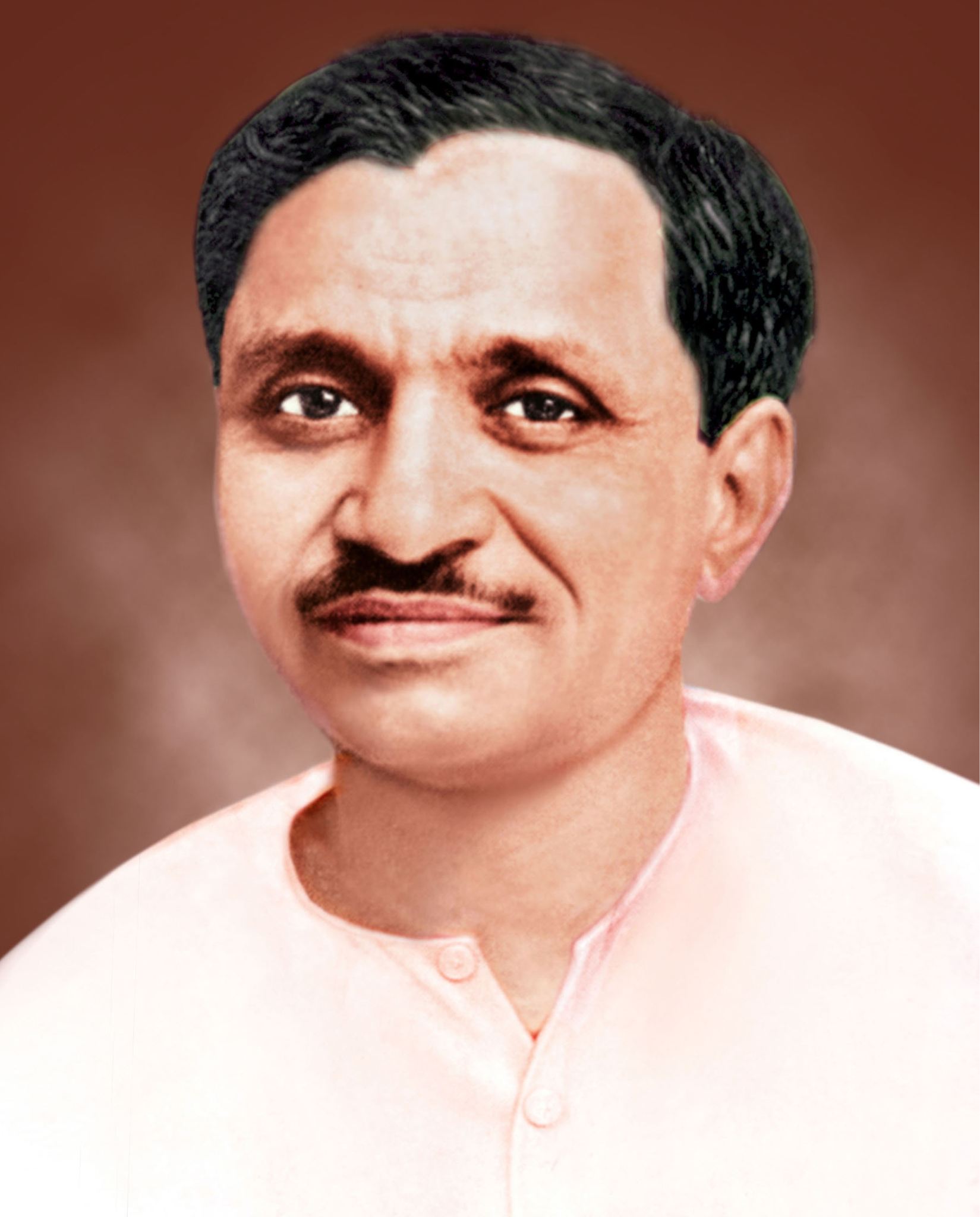
- Contributions: He focused on Antyodaya i.e., uplifting the last person and addressing the needs of the most disadvantaged.
- His philosophy of “Integral Humanism” emphasized welfare, social justice, economic equality, and self-reliance.
- Recognition: Since 25th September 2014, his birth anniversary is observed as Antyodaya Diwas to honor his contributions to the nation.
- In 2015, National Rural Livelihood Mission (NRLM) was renamed Deendayal Antyodaya Yojana-NRLM.
- In 2018, Mughalsarai Junction in Uttar Pradesh was renamed after him.
Read More: Sangathan se Samriddhi: DAY-NRLM


Place In News
Vishwamitri River and Mugger Crocodiles
The Government of Gujarat conducted a crocodile census in the Vishwamitri river of Vadodara, to estimate the population of mugger or marsh crocodiles (Crocodylus palustris).
- Vishwamitri River: Originates from the Pavagadh hills (part of Western Ghats) in Gujarat, flows through Vadodara, and joins the Gulf of Khambhat, fed by tributaries Dhadhar and Khanpur.
- Its banks had ancient settlements dating back to 1000 B.C., including Ankotakka (now Akota), which developed during the Guptas and Vallabhi rule.
- It hosts mugger crocodiles, freshwater turtles, and monitor lizards, making it ecologically unique among urban rivers.
- Mugger Crocodiles: Found in India, Sri Lanka, Pakistan, and Nepal, with its range extending westwards into eastern Iran, mainly in freshwater habitats like rivers, lakes, and marshes.
- Found in 15 Indian states, mainly in the Ganga River basin (Bihar and Jharkhand), Chambal River (Rajasthan and Madhya Pradesh) and Gujarat.
- They feed on fish, reptiles, birds, and mammals. They are hole-nesting species, laying 25-30 eggs during the dry season, with an incubation period of 55-75 days.
- Face threats from habitat destruction, poaching, and human-wildlife conflict.
- Conservation: Vulnerable (IUCN), CITES (Appendix I), and Schedule I (Indian Wildlife Protection Act ,1972).
Read more: Mugger Crocodile


Rapid Fire
India-EFTA Desk
India and the European Free Trade Association (EFTA) launched the India-EFTA Desk to strengthen economic ties and facilitate investments under the Trade and Economic Partnership Agreement (TEPA).
India-EFTA Desk
- About: It is a dedicated investment facilitation mechanism established by Invest India to serve as a single-window platform for businesses from the EFTA nations to invest in India.
- Objectives: The India-EFTA Desk aims to facilitate realising the objective of TEPA such as:
- USD 100 billion FDI over 15 years, generating over 1 million direct jobs in India.
- Commitments related to Intellectual Property Rights in TEPA.
- Technology Collaboration aligning with Make in India & Atma Nirbhar Bharat.
- India-EFTA TEPA is a comprehensive FTA signed in March 2024.
European Free Trade Association (EFTA)
- EFTA is an intergovernmental organization of Iceland, Liechtenstein, Norway, and Switzerland, established under the Stockholm Convention (1960).
- India is EFTA’s 5th-largest trading partner (after the EU, US, UK, and China).
- Two-way trade: USD 24 billion (2023-24), up from USD 18.65 billion (2022-23), with a trade gap favoring EFTA.
- Key partners: Switzerland (largest), followed by Norway.
Read More: India-EFTA Trade Deal



